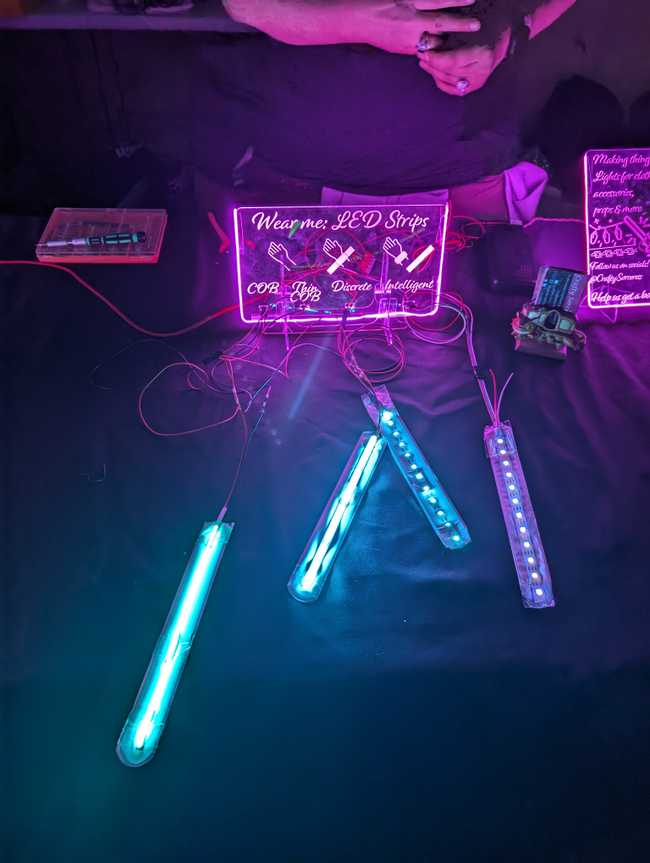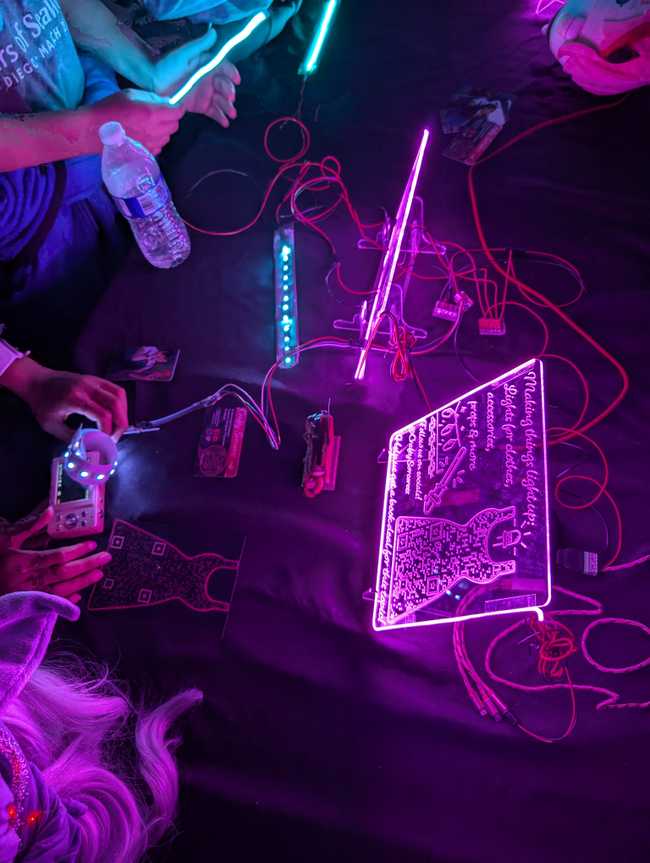tl;dr: With the iWiss SN-01BM, I am finding that I can get a decently sturdy connection on JST-XH, JST-SH, JST-SM, and Molex Micro-Fit 3.0, where the audience at the Bay Area Maker Faire spent three days futzing with some Micro-Fit 3.0 connectors I crimped and didn’t break them.
A lot of hobbyist stuff uses the confusingly-named DuPont connector family, that’s based somewhat on a connector made by a company that started out as Berg, then became part of DuPont, and lately is part of Amphenol ICC but is actually generally used to refer to a semi-generic clone system of the original Berg/DuPont/Amphenol ICC connector family. The big thing is that the DuPont connectors are simple. You can plug the pins into a breadboard and plug the socket into a bare PC header and everything just sorta kinda works. But this isn’t quite about DuPont connectors, because I have not solved that to my satisfaction, even though I have had a crimper for Jameco’s particular DuPont clone connectors that I picked up very very early into my electronics experimentation.
Basically, there’s a ton of connector families out there built around the idea that if you want a connector quickly, crimping it is a great way to get there and is also something that you can do on a factory level more easily than soldering. And, outside of the crimp connectors that electricians use, there’s almost no actual concern about how easy or simple or cheap it ought to be to use a connector family as a hobbyist hacker. Thus, crimp connectors promise much but are annoying if you ever need to do custom cabling.
You could say that this really has put a crimp on my style. Oops, there’s a pun. Very sorry, I’ll do it again.
The problem I tend to experience is that the connections aren’t secure. So it’ll kinda work, but the connector will fail the “pull test” or otherwise go flakey over time.
And, honestly, a lot of this is user error? I suspect that were I to get a very very very expensive crimper tool made by the manufacturer, everything will be great. Except that the expensive tools start at around $500 and just get worse from there. But, clearly the answer is not just “Can the tool crimp it properly in an ideal world?” it is actually “Can the tool crimp it properly when I use it?”
Thus, I’ve always been able to get a pretty good crimped connection using “blade”, also known as “Faston” connectors. I’ve seldom been able to get a proper DuPont crimped connection using my Jameco crimper, even though it looks actually like it’s specifically meant for that design of connector. And I’d love to be able to do something better, although I’ve also been distracted by other pressing needs.
Oops, there’s another pun.
A year or three ago, I’d put one of the iWiss crimpers that was alleged to work on my wishlist along with a ferrule crimper and a crimper for the larger stuff like ring and spade terminals because they fit well into the sorts of things that a person could get me for Christmas. So I ended up with three different crimpers for Christmas and everybody felt weird about giving me three crimpers. Except that the important thing here is that I asked for three different crimpers on my wishlist, like a weirdo, and everybody managed to get me a different one. And the family member, not to be identified lest they feel bad about it, got me not quite the iWiss crimper that does DuPont connectors but a different one.
On the other hand, it did look like a rather decent crimper. Actually, all three of them are pretty nice crimpers. They’ve got relatively long handles and a ratcheting mechanism. But I took some of the genuine and otherwise Dupont connectors and they didn’t seem to crimp right, but it did claim to do JST-XH and JST-SH properly and … that’s useful. So I got the connectors but didn’t get around to actually trying it.
This came to a head when I was building out my Voron Zero and Trident, but it was convenient because the exact connectors they were suggesting were the connectors this could do. I dug out the crimper and very quickly had some actual nicely crimped JST-XH and JST-SH connectors which felt good because this is something that has been quite a few years coming.
I had also procured some Molex Micro-Fit 3.0 connectors that the Trident Sourcing Guide listed even though the actual wiring diagram, as per the spec, didn’t use any of them, just because the Wiring Guide still talked about them as a good way to add a mid-connector break in things because they could go wire-to-wire, so I ended up using the Micro-Fit 3.0 connectors on my Zero and those clearly crimped just fine.
Some weeks ago, CraftySorceress and myself were working on a booth demo for the Maker Faire. We went through a bunch of ideas about how we could get some LED strips into a format where people could mess around with and feel confident about the idea of using in projects. Obviously part of this is making sure that the pieces don’t walk off and also that they don’t break repeatedly during the faire.
I guess one thing to mention is that DuPont connectors aren’t the ultimate perfect connector, they are just convenient in a lot of cases for a lot of things. There’s some things about the Micro-Fit 3.0 connector that are actually quite neat. It’s a locking connector so it won’t come loose, which also means that it can rely on the latch for retention force instead of friction on the pins. Unlike JST connectors where they have very different board-to-wire and wire-to-wire connectors, Micro-Fit 3.0 has both kinds of connector in the same system… plus, there’s a version of one side of the plug that has ears so you can mount it into a specifically shaped slot. And, as the baby child of the Mini-Fit Jr connectors that are used for ATX power, they are quite beefy and are designed for lots of power. Plus, both sides of the connector are recessed.
Thus, even if I’d gotten good DuPont crimping action going, if I used DuPont connectors here, the two pin connection would have come loose every time someone yanked. And because DuPont connectors only have the force of the springs on the crimped metal socket inside of the connector body, 2 pin DuPont connectors are actually really really marginal and love to come loose.
So as our ideas started diverging towards putting the LED strips on a slap bracelet, I figured that the Micro-Fit 3.0 would be a good connector because Crafty could just have a laser-cut sheet that the connectors could snap into for security. And this also meant that we’d have a lot of people including a lot of kids futzing with the LED strips and the connector all weekend, which meant it was a great battle test.
The resulting battle test is that the only failure was the LED strips at the soldered joint to the strip. There was a piece of heat-shrink to offer some amount of strain relief but that was clearly not nearly enough. That’s a separate problem, of course.
Ergo, Micro-Fit 3.0 connectors, crimped by me, in the iWiss SN-01BM crimper, are pretty neat and sturdy and might make your life easier.
I didn’t entirely have time before the faire, but I did toss a few JST-SM pins and a connector body into my most recent order and it also looks like that connector type works in the SM-01BM as well. This is actually quite handy because that’s the default connection that LED strips come with if they are going to come with a connector. And while I was thinking about how nice it was that the Micro-Fit 3.0 has those ears, I realized that the JST-SM connector also has those ears that you can use.

